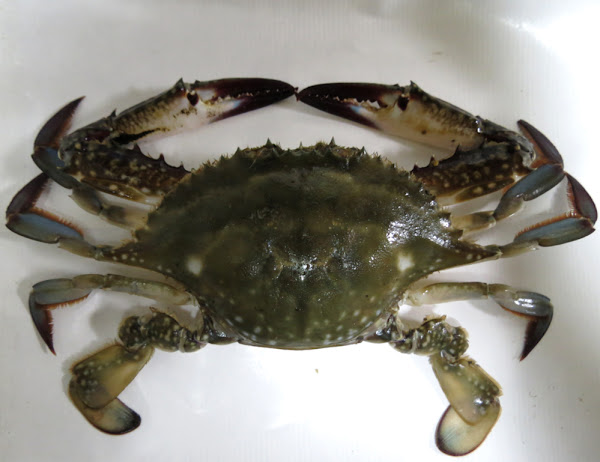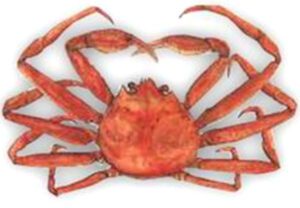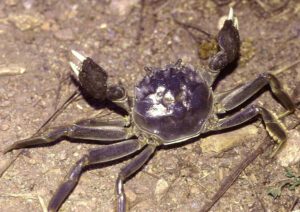The Gazami Crab is the most widely fished species of crab in the world. It is also known by some other names such as Japanese Blue Crab, Horse Crab and the binomial name is Portunus trituberculatus.
It is mainly found off the coasts of East Asia (Japan, Korea, China and Taiwan).
It was first described by Edward J. Miers in the year of 1876, under the name Neptunus trituberculatus. Read some more information about this crab below.
Gazami Crab Characteristics
Carapace of the Gazami Crab is rough to granulose with regions discernible. Generally the carapace is of dull green to brown color.
This crab is closely related to the Portunus pelagicus. But it may be distinguished from the Portunus pelagicus by the number of broad teeth on the front of the carapace.
On an average the carapace may reach about 15 cm wide, and around 7 cm form front to back. Photo and info from Wikipedia.

Uses
The Gazami Crab is mainly used for food.
Special Notes
The Gazami Crab is the world’s most heavily fished crab species, with more than 300,000 tonnes being caught annually. And most of the catches (around 98 percent) are from off the coast of China.
It is mainly caught by trawling. It is also a very important commercial crab species in Japan. It is common edible crab in Japan, and it is collected in large numbers in some areas.
The Gazami Crab generally inhabit in sandy and sand-muddydepths in shallow waters to 50 m depth. However, review full breed profile of this crab species below.
| Name | Gazami |
| Kingdom | Animalia |
| Phylum | Arthropoda |
| Class | Malacostraca |
| Order | Decapoda |
| Family | Portunidae |
| Genus | Portunus |
| Species | P. trituberculatus |
| Binomial Name | Portunus trituberculatus |
| Other Names | Also known as Japanese Blue Crab, Horse Crab |
| Breed Purpose | Mainly food |
| Special Notes | The world’s most heavily fished crab species with more than 300,000 tonnes being caught annually, most of the catches are from China, mainly caught by trawling, also an important commercial crab species in Japan, used mainly for food |
| Breeding Method | Natural |
| Climate Tolerance | Native climates |
| Body Color | Dull green to brown |
| Rarity | Common |
| Availability | East Asia |






